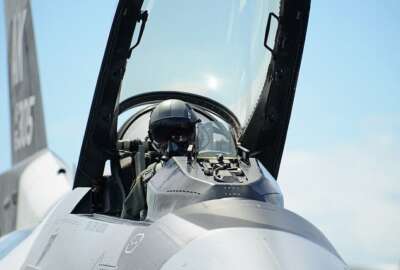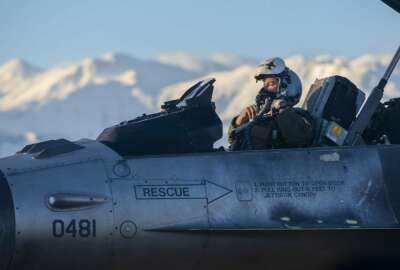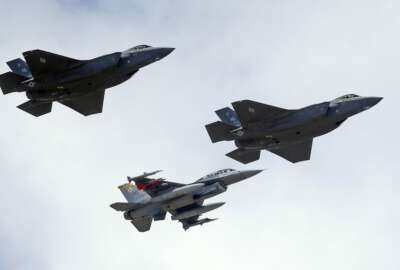
Navy pilots offered bigger bonuses for second year in a row
The Navy is increasing bonuses to keep pilots in the service.
Best listening experience is on Chrome, Firefox or Safari. Subscribe to Federal Drive’s daily audio interviews on Apple Podcasts or PodcastOne.
The Navy is giving pilots bigger bonuses to stay in the military this year as a way of keeping them in the service.
The move marks the second year in a row the Navy is paying pilots extra money. Pilots in the strike fighter, electronic attack and helicopter mine countermeasure occupations can now receive up to $35,000 a year in bonuses for five years. That totals $175,000.
The bonus program is “designed to retain those officers with the talent and command experience in our primary warfighting missions that are critical for the future of our service,” the March 20 announcement stated.
The Navy is looking at other ways to retain pilots too.
“Our bonus and flight pay programs have proven successful in the past at retaining our best and brightest aviators. However, these programs have remained essentially unchanged for well over a decade, and are beginning to lose their effectiveness in the face of growing competition for talent,” said Capt. Michael Baze, head of aviation career management at Naval Personnel Command. “We asked aviators of all ranks how we should modernize and improve moving forward. Aviators reported they wanted our programs to be more flexible, merit based, and competitive with civilian opportunities. We took that feedback seriously, incorporating each of these elements in the program changes.”
Last year, the Navy increased its bonuses to $150,000 with the help of Congress.
The military and private companies are hurting for pilots.
The Air Force is currently short 2,000 pilots. Air Force Secretary Heather Wilson said the 2019 budget will increase recruitment and continue incentive programs.
The service is increasing the number of pilots it trains a year from 1,200 to 1,400.
Last year, Lt. Gen. Darryl Roberson, the Air Education and Training Command director said the Air Force needs to put out 1,600 a year to stay on track. He said he wanted to hit 1,400 in the next few years.
“We’ve added hours to be able to fly more to beef up our replacement training units,” Air Force Vice Chief of Staff Gen. Stephen Wilson said during a Feb. 14 press availability at the Pentagon.
The Air Force is also getting creative with its pilot recruitment.
“We do have a couple of experiments to see if we can go faster. We are partnering with some local universities to see if we can take some of their students who have gone through one of their aviation programs. They already have their commercial multi-engine ratings and then can we pipeline them and not do the whole training, but just do the T-1 training and cut the pilot training in half, as well as experiment to see if we can use technology, some virtual reality and augmented reality to determine ‘Can I shorten that timeline?” Stephen Wilson said.
Last fall, the Air Force announced its second assignment in place program to keep pilots in their jobs.
“We’ve listened to our pilots and our aircrew and they said they want stability. It’s one of the big things they want for a lot of reasons — family, schools, spouses working — and so we take that limited career field of instructor pilots that’s at a base, and when they come up on their three year assignment, we are offering them a second assignment in place so we can give them six years at the same location and we retain that critical instructor pilot expertise that we are targeting. There seems to be a lot of interest in the field,” Brig. Gen. Michael Koscheski, director of the Air Force Aircrew Crisis Task Force, told Federal News Radio.
Read more of the DoD Personnel Notebook.
Copyright © 2025 Federal News Network. All rights reserved. This website is not intended for users located within the European Economic Area.
Scott Maucione is a defense reporter for Federal News Network and reports on human capital, workforce and the Defense Department at-large.
Follow @smaucioneWFED





